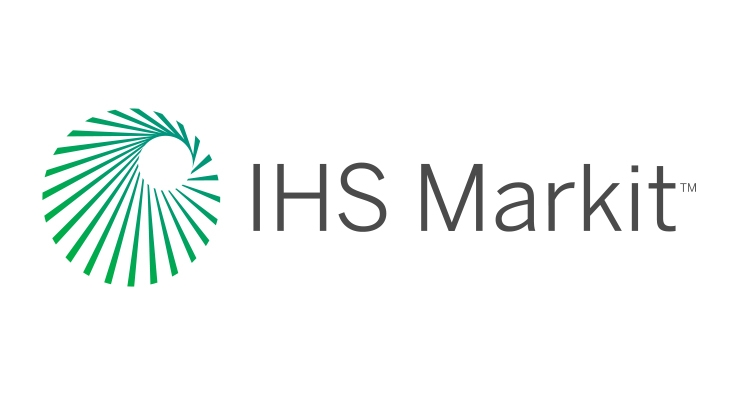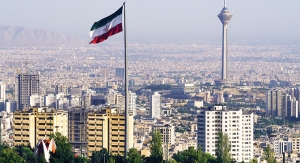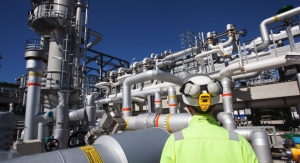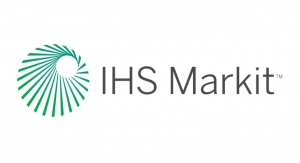09.08.17
IHS Markit is releasing periodic updates on the impact of Tropical Storm Harvey on the crude oil, refining and chemical sectors.
A summary of the latest update follows below (As of end of day September 6, 2017).
The complete report is available here.
Logistics
The Gulf Coast is almost back to normal from a marine/port point of view.
Corpus Christi is receiving ocean going tankers to feed its refineries and also ships that are loading there with crude exports.
Freeport is open although there may still be some dredging work underway at that location.
The Coast Guard announced last Friday the Galveston Bay entrance channel, outer bar channel, inner bar channel, bolivar roads anchorages, bolivar roads channel and Galveston harbor are open. The Texas City channel, Texas City turning basin and industrial canal are also open.
The Houston ship channel is mainly open including all container loading and unloading facilities.
The port of Houston is having staff challenges. A large number of Port employees were impacted by the flood. Those able to get to the port are working 12 hour days.
The three Lake Charles refineries are now able to receive imported crude oil.
Railroads appear to have made significant progress in restoring service.
BNSF Railway reports service restored to most of its system but expects an extended outage due to major bridge repair on a main route between Houston and Corpus Christi.
BNSF and Union Pacific advise that they hope to restore service soon between Houston and Beaumont, which will allow resumption of a more direct connection to the Baton Rouge/New Orleans area.
As operating conditions have improved, railroads have lifted most embargoes for shipments to, from, or passing through the Gulf region.
Crude
U.S. crude markets continue to show signs of normalizing, with production and midstream bottlenecks easing.
International and domestic crude prices have risen over the past two days, partially reflecting the resumption of crude oil consumption along the U.S. Gulf Coast as refineries return to service.
The daily U.S. government survey on Gulf of Mexico crude and natural gas production outages resulting from Harvey has been discontinued, indicating that offshore operations are quickly normalizing. As of the final report, only about 121,000 b/d of crude and 0.26 Bcf/d was still shut in.
Onshore, Eagle Ford operations are quickly ramping back up according to industry sources. It is possible that Eagle Ford shale production growth rates could slow somewhat in the weeks ahead as the storm impacted some company drilling schedules.
U.S. crude oil inventories could show large builds over the next couple of weeks, as domestic and imported crude deliveries have resumed while refinery crude consumption is still recovering. Offsetting this is a likely rebound in crude oil exports, now that Gulf ports are reopening.
At around $5 per barrel, the Brent-WTI Cushing spread is at its widest level in two years. The spread is unlikely to widen further, now that U.S. refineries are returning to service and crude supply bottlenecks are easing.
The next potential hurricane event that could impact crude markets is Hurricane Irma. In its immediate potential path are several Caribbean crude and product storage facilities. The biggest among them (albeit several days away at this point) is the Buckeye Bahamas Hub (formerly “Borco”) in Freeport, Grand Bahama Island. It has over 26 million barrels of crude and products storage capacity and is key location for blending, transshipping and terminalling operations that support crude oil trade between the Gulf Coast, East Coast and offshore markets like the Middle East, Europe and Africa.
Gulf of Mexico crude and gas production could again be threatened, depending on Irma’s ultimate path. The Central Gulf contains the largest concentration of offshore oil and natural gas platforms.
Refining
IHS Markit estimates that eight of the 20 refineries affected by Harvey are now operating at “normal” rates. And all but one of the other 12 are beginning restart procedures or actively ramping up production.
Including the impact of refineries that are partially operational, IHS Markit estimates that around 2.9 million b/d of distillation capacity (16 percent of U.S. total) is offline as of September 6. This is down from around 4.8 million b/d (27 percent of U.S. total) just one week ago. This total is expected to decline steadily over the next several days, falling to 1.6 million b/d (9 percent of U.S. total) over the weekend.
The faster-than-expected recovery by the refining industry has calmed product markets. Spot gasoline prices have declined for the past several days as fears of a broader supply crunch dissipate. However, the U.S. average retail gasoline price continues to trend upward as the impact of last week’s market upheaval works its way through the supply chain.
Retail prices are also being pulled upward by Hurricane Irma, currently a Category 5 storm bearing down on Florida.
The storm’s exact path is still unknown but at this point, it appears that Irma may move north along (or just offshore of) Florida’s Atlantic coast. This would still be greatly disruptive but far less so than if the storm moved laterally across the state.
Irma staying to the east would allow Gulf Coast refineries to continue shipping product to Florida’s western coast, and would allow a quicker resumption of deliveries to the state’s heavily populated southeast. This is critical because Florida’s gasoline supplies are relatively low at the moment, having been disrupted for the better part of a week already by Hurricane Harvey.
U.S. Fuels Markets
OPIS expects an average between $2.67-$2.70 gal when numbers are compiled for September 7 (overnight snapshot). September 6 number was $2.661 gal, up approximately 33cts gal from when Harvey first popped up as a hurricane threat.
Spot prices and the wholesale prices generated from the bulk markets remain very sturdy. The most dramatically high market is NY Harbor where either conventional or reformulated blendstock fetches a price of $2.01 gal, or well in excess of $84 bbl.
NYMEX October RBOB futures represent a point in time where most suppliers and customers believe inventories will stabilize. Hence, actual cash markets are trading at large premiums versus NYMEX - - 34cts gal in NY; 13cts gal in Houston; 8cts gal in Group 3 (OK/KS cluster or refineries); 8.25cts gal in Chicago; 27.5cts gal in Los Angeles and 30-31cts gal in SF and the Pacific Northwest.
Colonial Pipeline is now receiving contributions from refiners west of Lake Charles but shippers believe that there will be delays of about 7 days in arrivals downstream.
Wholesale gasoline supply thus remains tight from Georgia north to the Linden terminus, and may remain tight into the end of next week (c. September 15-17).
Florida deserves special mention as it is quite typical for the peninsula to operate on less than 10 days’ supply, compared to national figures that have recently been at 23.7 days’ supply. Evacuation orders and preparation after a state of emergency was declared have led to widespread outages and stations without fuel on the East Coast, and OPIS sees such actions spreading to the West Coast as well.
Complicating matters may be delays in cargo arrivals from Texas, Louisiana, Canada, Europe and Delaware River refiners. Once tropical storm winds are in the immediate forecast, ports will be closed to barge and tanker traffic.
OPIS believes that current prices (generally at 24 month highs) will stay and possibly increase slightly into mid-month. Despite the ultimate demand destruction that comes with the end of the driving season and with the aftermath of any landfall by Irma, the prospects of a monthly consumer gas bill above $30-billion is likely. But consumers regularly paid in excess of $40-billion during the high priced post Arab spring months from 2011-2014, as well as in 2008 when WTI topped $145 bbl and nationwide gasoline prices breached $4 gal (briefly).
Natural Gas
Deliveries into Cheniere’s Sabine Pass LNG export facility have fallen to below 200 Mmcfd from an average of approximately 1.9 Bcf/d prior to Hurricane Harvey.
With a reported 6 vessels waiting just offshore, and 5 in line farther out at sea, exports are likely to ramp up quickly, with purchases from the U.S. pipeline grid closely following once any excess tank inventory is worked down.
It took 8 days from receipts from the pipeline grid to decline to 0.5 Bcf/d or below once ships stopped docking on August 24th, so a similar period of ramp-up for receipts is reasonable to expect.
This demand rebound of more than 1.5 Bcf/d however occurs as natural gas use declines into the weak September/October shoulder season.
Under normal weather conditions, U.S. natural gas end use would decline by approximately 5.9 Bcf/d from August to September as power generation declines, and before heating load ramps up. As such, market impacts are likely to be muted, with only limited basis impacts as receipts continue to focus on the Creole Trail and Transco pipelines, until the NGPL Louisiana Line returns to service.
Hurricane Irma, if current path projections hold, unfortunately could also threaten the significant Florida natural gas market for a number of days. Florida natural gas demand for September under normal weather would be expected to average approximately 4.1 Bcf/d, or approximately 6.6 percent of the U.S. total.
Natural Gas Liquids (NGLs)
As of September 6, NGL operations effected by the storm at Mont Belvieu, Texas, the Permian Basin, and South Texas are returning to normal quickly.
IHS Markit Point Logic Energy data shows that gas plant NGL production is back to pre-Hurricane Harvey levels as operations in Mont Belvieu and the Permian initially impacted return to normal service.
NGL production from refineries has been slower to return than gas plant production. As of the evening of September 5, approximately 22 percent of NGL refinery supply capacity was still offline, down from 27 percent during the peak impact of the storm. IHS Markit expects this level to drop to 9 percent by September 10 as numerous refineries are in the process of resuming operations over the next several days.
The majority of export capacity is back online with ships preparing to load cargos. IHS Markit expects some operational issues to occur as capacity is brought back online due to third party facilities outside of many NGL related logistics facilities facing continued operational issues.
Last week ethane prices declined significantly on worries surrounding Gulf Coast cracker and export demand. As propane and butane prices both increased significantly due to supply concerns, ethane’s feedstock favorability increased substantially. As of the morning of September 6, ethane prices have returned back to their pre-Harvey levels but it continues to be the most favored feedstock.
LPGs ratio to crude as well as the differential to Asia appears to have stopped their consistent daily upward trend over the past two days of trading as concerns over supply and export constraints subside.
For updates specific to Asia, Europe and Latin America markets please see the full report.
Chemical
Ethylene – While the percentage of total U.S. ethylene production offline currently sits at 54 percent and total U.S. ethylene consumption capacity to 36 percent, a number of units have begun restart operations. LyondellBasell/Equistar, Formosa, and ExxonMobil are a sample of companies that have indicated they have ethylene production units in restart mode. The Evangeline line, which connects Texas to the Louisiana, Choctaw ethylene distribution, is vital for transport of ethylene from Texas to Louisiana; thus far, the pipeline appears to be undamaged. Some units have already begun restart operations, however it may take weeks for the overall ethylene market to approach pre-Hurricane production levels.
Propylene – The amount of confirmed propylene production assets offline has decreased slightly to 40 percent of the PGP/CGP. Refineries now coming online has lowered RGP supply offline to 21 percent. Another 16 percent of PGP/CGP supply and 5 percent RGP supply is running at reduced rates. Derivative consumption of propylene has declined to 36 percent or relative parity to supply with another 17 percent at reduced rates. Most derivative plants are reporting no significant damage but are limited either by supply of olefins or logistics constraints to move finished products.
Polyethylene – While initial estimates reflected nearly 60 percent of U.S. PE production capacity had been lost or constrained due to mechanical or logistical issues that figure has now been reduced to 41 percent. The improvement in the last week equates to approximately 3.2 million tons of incremental capacity that is now available to run. Only a small percentage (single digit) of the capacity currently offline is expected to remain offline for more than 30 days.
Polypropylene – Approximately 80 percent of North American production is back online, a remarkable recovery compared to only 40 percent as of the end of last week. This number is expected to increase to 85 percent by early next week and possibly higher.
Benzene – Most of the Houston area refineries are now going into the restart process with much of the market hopeful that operations will be able to return to normal operations by the end of next week. The Corpus Christi area refineries were already in restart over the last few days and could get back to normal operations by early next week. The major concern moving forward is for production in the Beaumont and Port Arthur area. The region lost power and water and that will make it more difficult to quickly restart but this region only has 6 percent of U.S. benzene capacity.
Chlor Alkali/Vinyls – The Chlor-alkali/Vinyls facilities in coastal Texas continue making progress towards the recovery from the hurricane and regional flooding. Formosa’s chlor-alkali plant in Point Comfort, Texas has restarted operations gradually, at low rates. VCM operations at Point Comfort have also resumed over the weekend and PVC operations are restarting, as well as the ethylene supply. OxyVinyls has made good progress too. Their PVC plants at Pasadena, Texas and Deer Park, Texas are running at reduced rates with available raw material inventory. Meanwhile, the VCM plants at Deer Park and LaPorte are progressing in their start-up plans.
Methanol – The methanol units in the path of the storm are mechanically intact, but are in need of associated units such as CO2 to start up before they can resume methanol and derivative production. None of the methanol units has been confirmed as restarted yet, leaving affected capacity at 2.7 million metric tons (46 percent of U.S. capacity).
A summary of the latest update follows below (As of end of day September 6, 2017).
The complete report is available here.
Logistics
The Gulf Coast is almost back to normal from a marine/port point of view.
Corpus Christi is receiving ocean going tankers to feed its refineries and also ships that are loading there with crude exports.
Freeport is open although there may still be some dredging work underway at that location.
The Coast Guard announced last Friday the Galveston Bay entrance channel, outer bar channel, inner bar channel, bolivar roads anchorages, bolivar roads channel and Galveston harbor are open. The Texas City channel, Texas City turning basin and industrial canal are also open.
The Houston ship channel is mainly open including all container loading and unloading facilities.
The port of Houston is having staff challenges. A large number of Port employees were impacted by the flood. Those able to get to the port are working 12 hour days.
The three Lake Charles refineries are now able to receive imported crude oil.
Railroads appear to have made significant progress in restoring service.
BNSF Railway reports service restored to most of its system but expects an extended outage due to major bridge repair on a main route between Houston and Corpus Christi.
BNSF and Union Pacific advise that they hope to restore service soon between Houston and Beaumont, which will allow resumption of a more direct connection to the Baton Rouge/New Orleans area.
As operating conditions have improved, railroads have lifted most embargoes for shipments to, from, or passing through the Gulf region.
Crude
U.S. crude markets continue to show signs of normalizing, with production and midstream bottlenecks easing.
International and domestic crude prices have risen over the past two days, partially reflecting the resumption of crude oil consumption along the U.S. Gulf Coast as refineries return to service.
The daily U.S. government survey on Gulf of Mexico crude and natural gas production outages resulting from Harvey has been discontinued, indicating that offshore operations are quickly normalizing. As of the final report, only about 121,000 b/d of crude and 0.26 Bcf/d was still shut in.
Onshore, Eagle Ford operations are quickly ramping back up according to industry sources. It is possible that Eagle Ford shale production growth rates could slow somewhat in the weeks ahead as the storm impacted some company drilling schedules.
U.S. crude oil inventories could show large builds over the next couple of weeks, as domestic and imported crude deliveries have resumed while refinery crude consumption is still recovering. Offsetting this is a likely rebound in crude oil exports, now that Gulf ports are reopening.
At around $5 per barrel, the Brent-WTI Cushing spread is at its widest level in two years. The spread is unlikely to widen further, now that U.S. refineries are returning to service and crude supply bottlenecks are easing.
The next potential hurricane event that could impact crude markets is Hurricane Irma. In its immediate potential path are several Caribbean crude and product storage facilities. The biggest among them (albeit several days away at this point) is the Buckeye Bahamas Hub (formerly “Borco”) in Freeport, Grand Bahama Island. It has over 26 million barrels of crude and products storage capacity and is key location for blending, transshipping and terminalling operations that support crude oil trade between the Gulf Coast, East Coast and offshore markets like the Middle East, Europe and Africa.
Gulf of Mexico crude and gas production could again be threatened, depending on Irma’s ultimate path. The Central Gulf contains the largest concentration of offshore oil and natural gas platforms.
Refining
IHS Markit estimates that eight of the 20 refineries affected by Harvey are now operating at “normal” rates. And all but one of the other 12 are beginning restart procedures or actively ramping up production.
Including the impact of refineries that are partially operational, IHS Markit estimates that around 2.9 million b/d of distillation capacity (16 percent of U.S. total) is offline as of September 6. This is down from around 4.8 million b/d (27 percent of U.S. total) just one week ago. This total is expected to decline steadily over the next several days, falling to 1.6 million b/d (9 percent of U.S. total) over the weekend.
The faster-than-expected recovery by the refining industry has calmed product markets. Spot gasoline prices have declined for the past several days as fears of a broader supply crunch dissipate. However, the U.S. average retail gasoline price continues to trend upward as the impact of last week’s market upheaval works its way through the supply chain.
Retail prices are also being pulled upward by Hurricane Irma, currently a Category 5 storm bearing down on Florida.
The storm’s exact path is still unknown but at this point, it appears that Irma may move north along (or just offshore of) Florida’s Atlantic coast. This would still be greatly disruptive but far less so than if the storm moved laterally across the state.
Irma staying to the east would allow Gulf Coast refineries to continue shipping product to Florida’s western coast, and would allow a quicker resumption of deliveries to the state’s heavily populated southeast. This is critical because Florida’s gasoline supplies are relatively low at the moment, having been disrupted for the better part of a week already by Hurricane Harvey.
U.S. Fuels Markets
OPIS expects an average between $2.67-$2.70 gal when numbers are compiled for September 7 (overnight snapshot). September 6 number was $2.661 gal, up approximately 33cts gal from when Harvey first popped up as a hurricane threat.
Spot prices and the wholesale prices generated from the bulk markets remain very sturdy. The most dramatically high market is NY Harbor where either conventional or reformulated blendstock fetches a price of $2.01 gal, or well in excess of $84 bbl.
NYMEX October RBOB futures represent a point in time where most suppliers and customers believe inventories will stabilize. Hence, actual cash markets are trading at large premiums versus NYMEX - - 34cts gal in NY; 13cts gal in Houston; 8cts gal in Group 3 (OK/KS cluster or refineries); 8.25cts gal in Chicago; 27.5cts gal in Los Angeles and 30-31cts gal in SF and the Pacific Northwest.
Colonial Pipeline is now receiving contributions from refiners west of Lake Charles but shippers believe that there will be delays of about 7 days in arrivals downstream.
Wholesale gasoline supply thus remains tight from Georgia north to the Linden terminus, and may remain tight into the end of next week (c. September 15-17).
Florida deserves special mention as it is quite typical for the peninsula to operate on less than 10 days’ supply, compared to national figures that have recently been at 23.7 days’ supply. Evacuation orders and preparation after a state of emergency was declared have led to widespread outages and stations without fuel on the East Coast, and OPIS sees such actions spreading to the West Coast as well.
Complicating matters may be delays in cargo arrivals from Texas, Louisiana, Canada, Europe and Delaware River refiners. Once tropical storm winds are in the immediate forecast, ports will be closed to barge and tanker traffic.
OPIS believes that current prices (generally at 24 month highs) will stay and possibly increase slightly into mid-month. Despite the ultimate demand destruction that comes with the end of the driving season and with the aftermath of any landfall by Irma, the prospects of a monthly consumer gas bill above $30-billion is likely. But consumers regularly paid in excess of $40-billion during the high priced post Arab spring months from 2011-2014, as well as in 2008 when WTI topped $145 bbl and nationwide gasoline prices breached $4 gal (briefly).
Natural Gas
Deliveries into Cheniere’s Sabine Pass LNG export facility have fallen to below 200 Mmcfd from an average of approximately 1.9 Bcf/d prior to Hurricane Harvey.
With a reported 6 vessels waiting just offshore, and 5 in line farther out at sea, exports are likely to ramp up quickly, with purchases from the U.S. pipeline grid closely following once any excess tank inventory is worked down.
It took 8 days from receipts from the pipeline grid to decline to 0.5 Bcf/d or below once ships stopped docking on August 24th, so a similar period of ramp-up for receipts is reasonable to expect.
This demand rebound of more than 1.5 Bcf/d however occurs as natural gas use declines into the weak September/October shoulder season.
Under normal weather conditions, U.S. natural gas end use would decline by approximately 5.9 Bcf/d from August to September as power generation declines, and before heating load ramps up. As such, market impacts are likely to be muted, with only limited basis impacts as receipts continue to focus on the Creole Trail and Transco pipelines, until the NGPL Louisiana Line returns to service.
Hurricane Irma, if current path projections hold, unfortunately could also threaten the significant Florida natural gas market for a number of days. Florida natural gas demand for September under normal weather would be expected to average approximately 4.1 Bcf/d, or approximately 6.6 percent of the U.S. total.
Natural Gas Liquids (NGLs)
As of September 6, NGL operations effected by the storm at Mont Belvieu, Texas, the Permian Basin, and South Texas are returning to normal quickly.
IHS Markit Point Logic Energy data shows that gas plant NGL production is back to pre-Hurricane Harvey levels as operations in Mont Belvieu and the Permian initially impacted return to normal service.
NGL production from refineries has been slower to return than gas plant production. As of the evening of September 5, approximately 22 percent of NGL refinery supply capacity was still offline, down from 27 percent during the peak impact of the storm. IHS Markit expects this level to drop to 9 percent by September 10 as numerous refineries are in the process of resuming operations over the next several days.
The majority of export capacity is back online with ships preparing to load cargos. IHS Markit expects some operational issues to occur as capacity is brought back online due to third party facilities outside of many NGL related logistics facilities facing continued operational issues.
Last week ethane prices declined significantly on worries surrounding Gulf Coast cracker and export demand. As propane and butane prices both increased significantly due to supply concerns, ethane’s feedstock favorability increased substantially. As of the morning of September 6, ethane prices have returned back to their pre-Harvey levels but it continues to be the most favored feedstock.
LPGs ratio to crude as well as the differential to Asia appears to have stopped their consistent daily upward trend over the past two days of trading as concerns over supply and export constraints subside.
For updates specific to Asia, Europe and Latin America markets please see the full report.
Chemical
Ethylene – While the percentage of total U.S. ethylene production offline currently sits at 54 percent and total U.S. ethylene consumption capacity to 36 percent, a number of units have begun restart operations. LyondellBasell/Equistar, Formosa, and ExxonMobil are a sample of companies that have indicated they have ethylene production units in restart mode. The Evangeline line, which connects Texas to the Louisiana, Choctaw ethylene distribution, is vital for transport of ethylene from Texas to Louisiana; thus far, the pipeline appears to be undamaged. Some units have already begun restart operations, however it may take weeks for the overall ethylene market to approach pre-Hurricane production levels.
Propylene – The amount of confirmed propylene production assets offline has decreased slightly to 40 percent of the PGP/CGP. Refineries now coming online has lowered RGP supply offline to 21 percent. Another 16 percent of PGP/CGP supply and 5 percent RGP supply is running at reduced rates. Derivative consumption of propylene has declined to 36 percent or relative parity to supply with another 17 percent at reduced rates. Most derivative plants are reporting no significant damage but are limited either by supply of olefins or logistics constraints to move finished products.
Polyethylene – While initial estimates reflected nearly 60 percent of U.S. PE production capacity had been lost or constrained due to mechanical or logistical issues that figure has now been reduced to 41 percent. The improvement in the last week equates to approximately 3.2 million tons of incremental capacity that is now available to run. Only a small percentage (single digit) of the capacity currently offline is expected to remain offline for more than 30 days.
Polypropylene – Approximately 80 percent of North American production is back online, a remarkable recovery compared to only 40 percent as of the end of last week. This number is expected to increase to 85 percent by early next week and possibly higher.
Benzene – Most of the Houston area refineries are now going into the restart process with much of the market hopeful that operations will be able to return to normal operations by the end of next week. The Corpus Christi area refineries were already in restart over the last few days and could get back to normal operations by early next week. The major concern moving forward is for production in the Beaumont and Port Arthur area. The region lost power and water and that will make it more difficult to quickly restart but this region only has 6 percent of U.S. benzene capacity.
Chlor Alkali/Vinyls – The Chlor-alkali/Vinyls facilities in coastal Texas continue making progress towards the recovery from the hurricane and regional flooding. Formosa’s chlor-alkali plant in Point Comfort, Texas has restarted operations gradually, at low rates. VCM operations at Point Comfort have also resumed over the weekend and PVC operations are restarting, as well as the ethylene supply. OxyVinyls has made good progress too. Their PVC plants at Pasadena, Texas and Deer Park, Texas are running at reduced rates with available raw material inventory. Meanwhile, the VCM plants at Deer Park and LaPorte are progressing in their start-up plans.
Methanol – The methanol units in the path of the storm are mechanically intact, but are in need of associated units such as CO2 to start up before they can resume methanol and derivative production. None of the methanol units has been confirmed as restarted yet, leaving affected capacity at 2.7 million metric tons (46 percent of U.S. capacity).




























